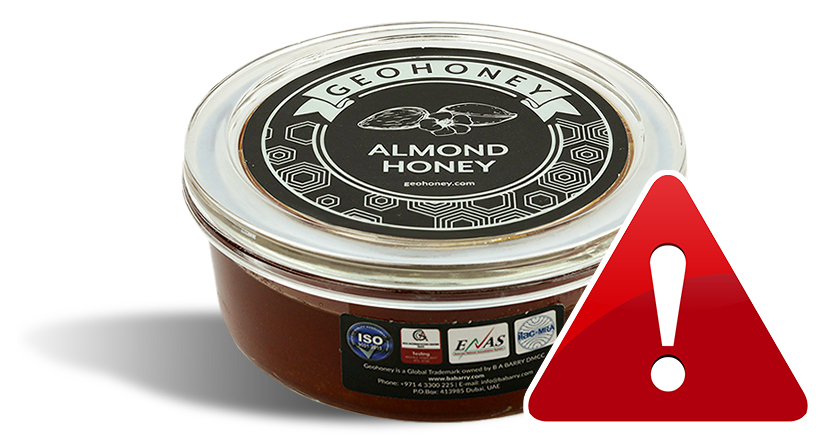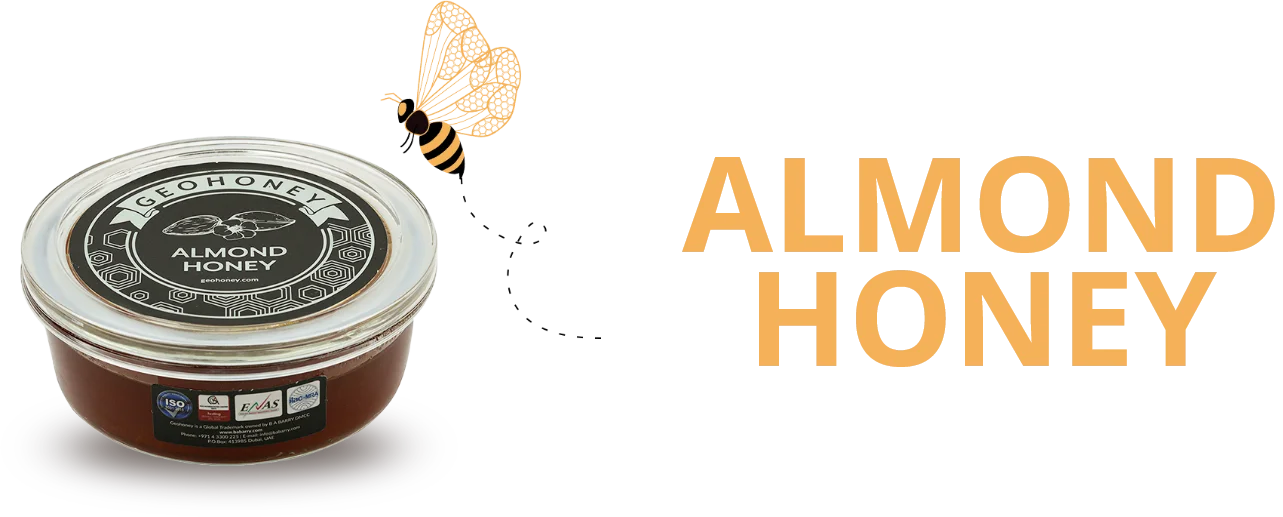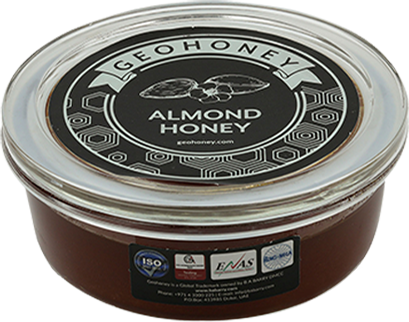Comprehensive Detailed Guide about Almond Honey
Honey is truly a "food of the Gods'! It is used almost everywhere and is produced only by tiny honey bees. It adds a bit of sweetness to your morning cup of tea/coffee, acts as a natural cough suppressant, relaxes your mind, heals your wound, and does much more than anyone has expected. It is entirely true that the magic of honey never fades.
The honey bee that creates the honey is thought of as a "power creature" and is a fundamental piece of numerous shamanic customs. It is symbolic of fertility, success, persistence, community, and a hard-working attitude. A few societies consider honey bees as a messenger of the Gods. Their honey has also been considered the nectar of the Gods, subsequently raising honey bees to the status of royalty. All through the holy book in the Jewish, Christian, and Muslim customs, honey is often referred to as a divine substance. This holy natural sweetener is available in numerous monofloral and polyfloral varieties worldwide. Almond honey is a variety available in the market known for its unique characteristics.

What is Almond Honey?
Almond honey is not among the common honey varieties used by people worldwide. As California is the largest producer of almonds globally, large quantities of almond honey are produced here. It is not a popular honey variety as some people do not love the nutty solid taste. It comes in light amber color and offers a hint of almond nut with a strong aftertaste. The people, however, consume this medium-sweet honey variety for the unique health properties that it has.
About Almond Tree
Almond trees are deciduous trees that typically grow 10-15 feet in height. These trees have a stunning appearance when they bloom from late January to early April north of the Equator. Almond tree flowers are five-petaled and have light pink to white color. These flowers usually require the help of insect pollinators to facilitate cross-pollination with other cultivars. Almonds are not the actual nuts; they are instead seeds enclosed in hard fruit covering.
The sweet almonds obtained from these trees are developed widely in specific favorable areas; however, nut crops are not sure where ice/snow is likely to occur during blossoming. In olden times, almond tree cultivation was characterized by variability in age, bearing capacity of the individual trees, hand labor, often with crude elements, and trees interplanted with different crops. However, present-day almond cultivators are usually more modern, with vast orchards of around three sorts of trees of a similar age. Motorized tree shakers are frequently used to speed up harvesting, and numerous producers should rent honey bees during the blooming season to fertilize their trees. For sure, the yearly pollination of the almonds in California is the biggest managed pollination, with more than 1.1 million bee colonies brought to the states every year.


How is Almond Honey Made?
Worker bees (who represent at least 98% of the bee colony populace) are the ones that produce honey under a convoluted methodology. An incredible number of worker bees are vital; no single honey bee can deliver honey without other bees of the colony.
Worker bees suck the nectar out of almond blossoms, and they store it in their subsequent special stomach (planned particularly for putting away honey) while they fly back to the hive. When they return to the hive, they pass the nectar to the "chewing" honey bees, mainly the bees waiting in the hive. The chewing honey bees gather the nectar, and they chew it for around 30 minutes. During the process, enzymes present in their mouth are changing nectar into a substance containing honey and water. After the chewing process, the worker bees diffuse the substance into honeycombs, with the goal that the water can dissipate, making the honey less watery.
Water evaporation is accelerated as different honey bees fan it with their wings. When the honey production is completed, honey bees now work on fixing the cells of honeycombs with wax, so the honey is secured.
Honey bees produce and store their products like honey, propolis, royal jelly, etc. for their use. They can survive eating honey during winter and different periods when pollen is not available in large quantities. As beekeepers steal a portion of this honey stocked during the harvesting process, honey bees will counter produce the honey amount taken from people. They will go on with their lives without any problems.
Required Environment for Almond Farming
Almond trees usually grow in regions where the temperature ranges between 30 – 35C and cool winters for plant growth. Unopened flowers can withstand temperatures as low as -2.2C, but flowers with petals usually damage at .50C to -1.1C.


What Are the Benefits of Almond Honey?
-
Helps in Controlling Diabetes
Substituting regular table sugar with almond honey is a better way to control blood sugar for diabetic people. People who use honey regularly notice a significant reduction in blood sugar levels and body weight. Almond honey keeps the blood glucose level under control and enhances the body's energy levels.
-
Strengthens the Immune System
Almonds are a storehouse of nutrients like zinc, iron, and vitamin B, while almond honey is known to have immune-supporting properties. You can get more advantages by consuming this honey. This combination can also assist with fortifying the body during influenza season.
-
Helps in Weight Loss
All those troubled by increasing weight should consume almond honey regularly. As honey contains beneficial enzymes that curb the appetite and prevent overeating, it is the best ingredient to assist you in your weight loss journey. The rich amount of protein & fiber in honey keeps the stomach full and also promotes metabolism.
-
Enhances Skin Glow
Eating almond honey regularly advantage your skin in the very best way. Skin wellbeing can be improved with this natural yet extraordinary sweetener. A face pack made with almond honey helps clean the skin's pores and makes the skin young and gleaming. It decreases skin inflammation, pimples, and acne on the face. A little milk can also be added to the combination for better outcomes.
-
Helps in Iron Deficiency
As almonds are a powerhouse of many nutrients, including iron, almond honey is also a rich source of iron. Consuming a tablespoon of it is equivalent to recommended daily iron intake for an adult person.
Is Almond Honey Vegan?
As an animal-derived food, honey is by definition not vegetarian. Honey bees gather nectar from blossoms to some degree, digest it, and afterward regurgitate it once back in their hives. Worker bees then seal it into beeswax honeycomb, a lot of it to store food to empower the hive to survive in the colder time of year. Generally, honey from commercial producers comes from hives treated with antibiotics. Beekeepers frequently respond to illness outbreaks by burning their hives-killing all honey bees inside.
Thus most vegan people think of honey bee farming also as exploitation. It is believed that numerous commercial honey bee farmers exploit honey bees to enhance honey production, which most vegetarians view as exploitative. For example, they cut the wings of honey bees to keep them from flying off and kill whole states to prevent the spreading of infection and others.
According to vegan people, commercial honey farming might be risky for the health of honey bees. Honey bees store honey and consume it in winters to remain sound and get by during chilly climates. Unfortunately, honey is sometimes supplanted by sucrose or high-fructose corn syrup. In any case, sucrose or high-fructose don't satisfy their nutritional requirements and are even harmful to their health.


What are the Risks & Precautions of Using Almond Honey?
Though many people do not like the taste of almond honey, it is safe to consume for most adults. It can be consumed directly from the mouth or used for topical applications on the skin. It does not pose any ill effects when consumed in moderate quantities. However, pregnant & breastfeeding women are suggested to avoid the consumption of almond honey to stay on the safe side.
Y- It is recommended not to give almond honey to babies below one year of age as it can cause infant botulism. Botulism poisoning is a severe risk at this age, but not for older children and adults due to strengthening immune systems.
- Diabetic people should also avoid consuming honey in large quantities as it can cause a sudden spike in blood glucose levels.
- People who are allergic to pollen particles should never consume almond honey, leading to severe allergies
Takeaway
Almond honey is a rare honey variety with a whole different taste. For all those who want to try new varieties and gain immense health benefits from such natural products, almond honey is an excellent choice for them. Geohoney brings a new line of honey products for their customers so that they can enjoy devouring 100% organic, wild and purest honey loaded with great benefits at affordable prices.

BUY OUR ALMOND HONEY
What’s the buzz, Join the hive !
SIGN UP TO OUR NEWSLETTER
Be the first to know about our hot deals, new arrivals.









 Pay By Cards
Pay By Cards
 PayPal
PayPal
 Stripe
Stripe
 Other Payment Methods
Other Payment Methods










